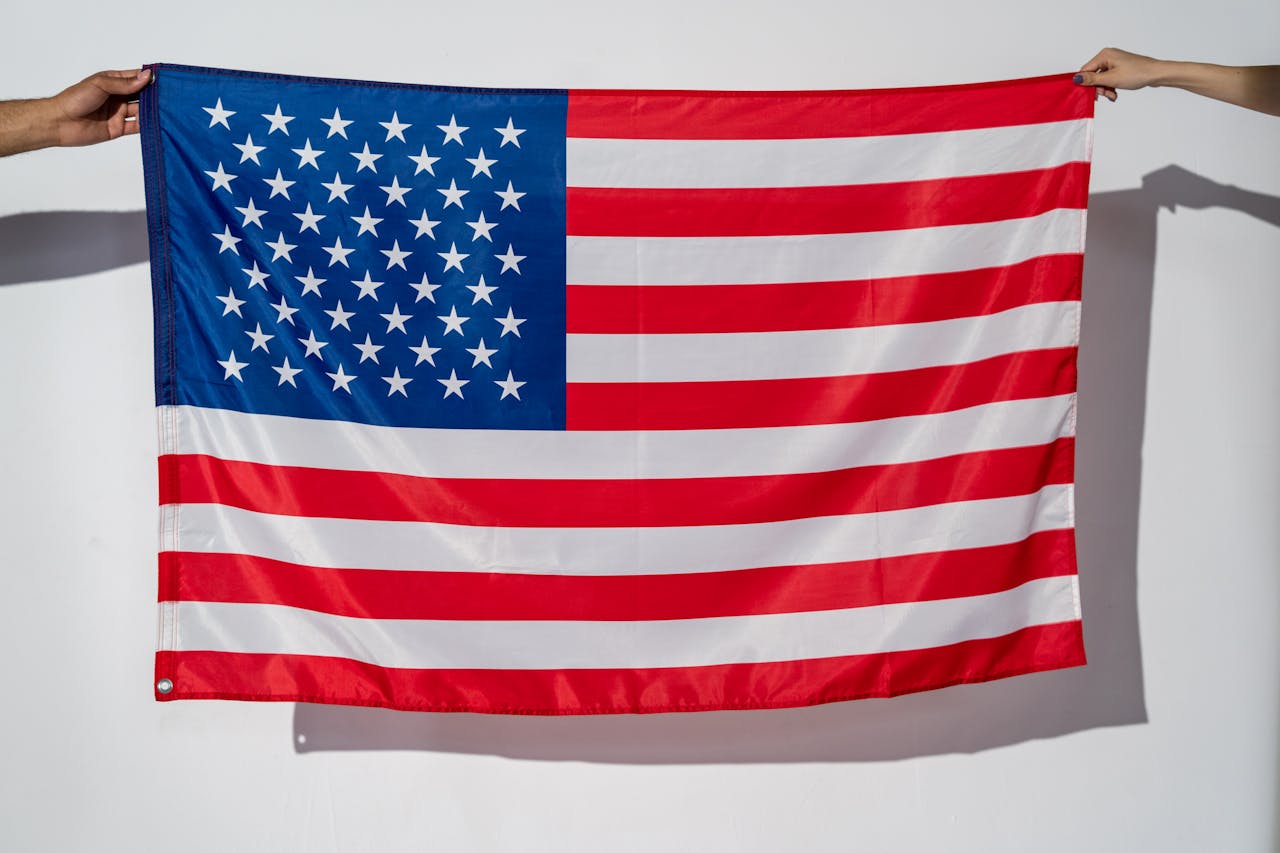
· By Drew Whitmore
Understanding U.S. Flag Materials: Nylon vs. Polyester vs. Cotton
Choosing the Right Fabric for Your American Flag
When selecting an American flag, the fabric is more than just a detail — it determines how your flag looks, feels, and performs over time.
Different American flag materials respond differently to sunlight, rain, and wind. Some are made for year-round outdoor display, while others are better suited for ceremonial or indoor use.
Below, we’ll compare nylon, polyester, and cotton — the three most common flag materials — so you can make the best choice for your location, climate, and display goals.
1. Nylon: Lightweight and All-Weather Friendly
Nylon has earned a reputation as one of the most versatile American flag fabrics. It’s lightweight, dries quickly, and its colors are vibrant. This makes it a top choice for homeowners who want their flag to move easily, even in a gentle breeze.
If you’re pairing your flag with a reliable pole, consider our sturdy 24ft flagpole kit to ensure it’s displayed proudly in any season.
Advantages:
-
Bright, glossy appearance that stands out from the street.
-
Quick-drying after rain or snow.
- Requires only light wind to lift and display fully.
Considerations:
-
Less resistant to extreme wind compared to heavier fabrics.
- Prolonged exposure to strong UV rays can cause gradual fading.
Nylon works well in moderate climates where the wind isn’t constantly strong, and it’s ideal if you want a flag that’s always in motion.

2. Polyester: Heavy-Duty and Built for Harsh Conditions
Polyester, especially two-ply polyester, is designed to endure tough weather.
It’s thicker and stronger than nylon, with a texture that’s built for resilience rather than shine.
If you live in an area with high winds, heavy rainfall, or intense sunlight, polyester is often the most reliable option.
For those in storm-prone or coastal areas, our tips on best flagpole materials for coastal homes can help you choose a setup that lasts.
Advantages:
-
Highly resistant to tearing in stormy or windy weather.
-
Maintains color integrity even with prolonged UV exposure.
- Performs well in coastal or open-field locations.
Considerations:
-
Heavier weight means it needs stronger winds to fly.
- Slightly less sheen compared to nylon.
For households or businesses in challenging climates, polyester is the “set it and forget it” option for long-term outdoor display.

3. Cotton: Traditional and Ceremonial
Cotton is the oldest and most traditional American flag material. It offers a rich, historic look that feels classic and respectful.
Cotton flags are often used indoors or for special occasions, such as Memorial Day or Veterans Day ceremonies.
To keep yours in top condition, follow our guide on how to clean and store your American flag.
Advantages:
-
Soft, natural texture with a timeless appearance.
-
Deep, rich colors that look dignified in indoor settings.
- Perfect for presentations, parades, or memorials.
Considerations:
-
Not ideal for continuous outdoor exposure — absorbs moisture and dries slowly.
- Prone to fading and wear when exposed to the elements.
If your goal is a display that honors tradition and formality, cotton is unmatched — just reserve it for conditions that won’t expose it to excessive rain or wind.
How to Decide Which Material Is Best for You
When choosing your American flag material, think about where and how often you plan to display it.
-
For all-weather, everyday use in moderate conditions: Nylon is your best bet.
-
For high-wind or coastal areas: Go with polyester for maximum durability.
- For formal or indoor display: Choose cotton for its classic presentation.
If you live in a neighborhood with restrictions, our article on HOA flagpole rules explains your rights and what to expect.
Your decision should balance both the aesthetic you want and the conditions your flag will face.
Caring for Your American Flag
No matter which material you choose, proper care extends its life. Here are a few tips:
-
Bring your flag indoors during extreme weather to prevent damage.
-
Wash gently with mild detergent and cold water to preserve color.
- Store in a cool, dry place when not in use.
If you’re deciding how to mount your display, see our comparison of ground-mounted vs. wall-mounted flagpoles to choose the style that fits your space.
Each material has its strengths, but neglecting care will shorten its lifespan — even for the most durable polyester.
Conclusion: Fly It Proud, Fly It Right
Choosing the right American flag material ensures you can display your pride in a way that looks great and stands up to your environment.
Nylon, polyester, and cotton each have their place, and the right choice depends on your climate, display location, and personal preferences.
A flag is more than fabric — it’s a symbol of history, sacrifice, and unity.
Whether you prefer the elegance of nylon, the strength of polyester, or the tradition of cotton, select the material that will let your American flag fly proudly for as long as possible.
Explore our American made flags or get in touch through our contact page for guidance on finding the right one.
